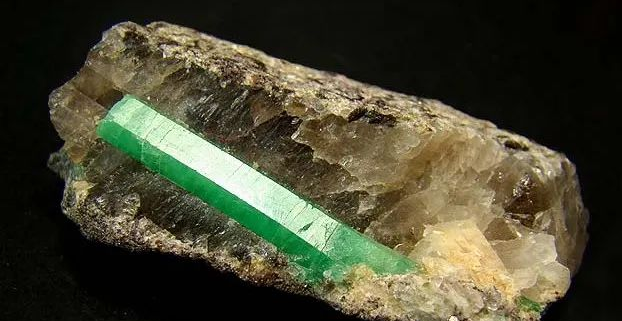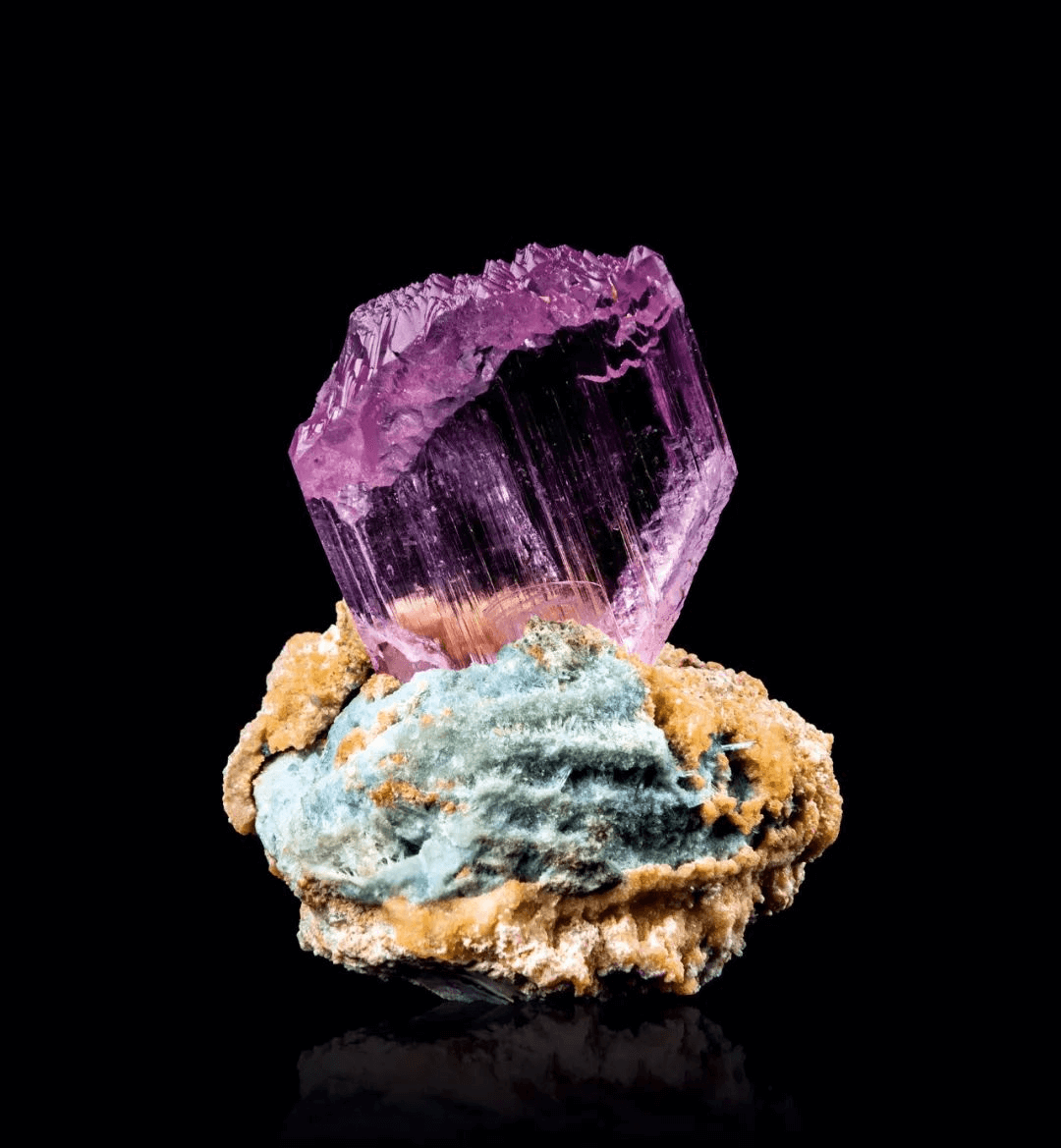A separation and enrichment method for spodumene and beryl dressings
Both spodumene and beryl are aluminosilicate minerals, which often coexist in the same pegmatite deposit; because their minerals are non-magnetic, and their relative densities are close, and are similar to those of gangue minerals. Therefore, it is difficult to separate beryl and spodumene by magnetic separation and gravity separation, and only by flotation separation. On the other hand, because the buoyancy of garnet, hornblende, tourmaline, biotite and muscovite is similar to that of beryl and spodumene, the enrichment and separation of beryl and spodumene are more difficult.
The flotation separation of beryl and spodumene generally includes mixed flotation and preferential flotation (preferential flotation of beryl, the re-election of spodumene, priority flotation of spodumene, the re-election of beryl, or preferential flotation of some lithium Pyroxene, then lithium beryllium mixed separation and separation) two principle processes, cationic collectors and anion collectors can be used for flotation.
(1) Priority flotation
It is necessary to add regulators when using cationic collectors to separate beryl and spodumene since silicate minerals have good buoyancy.
① Prioritize flotation of spodumene, then select beryl (inhibit beryl first, then prioritize flotation of spodumene, then activate beryl and carry out flotation). Priority flotation of spodumene is mainly accomplished by using sodium fluoride and wood sulfurate, which inhibit beryl and gangue. By forming a hydrophilic film on the surface of beryl and gangue minerals, lignosulfonate prevents collectors (such as oleic acid) from sticking and adsorption. Although lignosulfonate has little effect on spodumene mineral particles, it can ensure its preferential flotation. If you want to dissolve lignosulfonate using alkali in a low-alkali medium, add sodium carbonate alkali lignin into the ball mill for a long time. Spodumene is floated using oxidized paraffin soap, naphthene acid soap, and diesel at this time. To activate beryl and suppress gangue, sodium hydroxide, sodium sulfide, and ferric chloride are used in the flotation tailings. Oxidized paraffin soap and diesel oil are also used to float the beryl.
② Prioritize flotation of beryl, then spodumene (suppress spodumene first, then prioritize flotation of beryl, then activate spodumene and perform flotation). Inhibit spodumene in a high alkali medium adjusted with sodium carbonate, and use fatty acids (such as oxidized paraffin soap and diesel oil) to float beryl; flotation tailings are activated by sodium hydroxide, and then use fatty acids (such as oxidized paraffin soap and diesel oil) Flotation of spodumene. When an anion collector is used, the descending order of the regulator’s inhibition on spodumene is: sodium fluoride, lignin sulfonate, phosphate, sodium carbonate, sodium fluorosilicate, sodium silicate, starch, etc. These adjustments The inhibitory effect of different agents on beryl is very different. In neutral and weakly alkaline media, a large amount (above 1 kg/ton) of sodium fluoride, lignosulfonate, phosphate, carbonate, etc. have a strong Inhibitory effect, while a small amount of sodium silicate, starch, etc. have no obvious inhibitory effect on beryl. Generally, these agents have weaker inhibitory effects in strongly alkaline media, but their inhibitory effects on spodumene are stronger.
③ Prioritize flotation of part of lithium and then carry out mixed separation of lithium beryllium and then separate. Sodium fluoride and sodium carbonate are used as regulators and added to the ball mill. Fatty acid soap is used to preferentially flotation part of spodumene, and sodium hydroxide is added to the flotation tailings Activate with calcium ions, then use fatty acid soap to flotation spodumene-beryl, and mix the coarse concentrate with sodium carbonate, sodium hydroxide, acid, and alkaline water glass to heat (for example, 85 ℃), and the green Pillar concentrate.
(2) Mixed flotation
The stirred pulp was cleaned in a spiral classifier after being stirred with 0.91 kg/t hydrofluoric acid for 5 minutes at a solid concentration of 30% (pH=3.8) in spodumene flotation tailings containing 0.08% BeO. After acid, at a solid concentration of 30%, stir with 0.41 kg/ton sodium silicate, 0.14 kg/ton sodium hydroxide, and 0.41 kg/ton oleic acid for 5 minutes, enter the roughing tank, when Ph=7.3, One roughing and three beneficiation were carried out to obtain a concentrate containing 1.25% Be0 and 4.45% Li20, and the recoveries were 89.1% and 65.8% respectively.
(3) Concentration and separation of lithium and beryllium rough concentrate
Rough concentrates of lithium and beryllium generally contain mica, feldspar and quartz, etc., which need to be further refined and removed. The removal method is to stir the mixed coarse concentrate with sulfuric acid (for example, the dosage is about 4.50 kg/ton) to wash off the fatty acid, and then stir it with about 1 kg/ton of sulfuric acid and about 90 g/ton of ammonium acetate. After removing mica, a concentrate containing 94% of mica can be obtained, and the tailings are further refined with spodumene. During spodumene beneficiation, the above-mentioned tailings are stirred together with about 700 g/t of oleic acid for primary roughing and secondary beneficiation to obtain spodumene with a recovery rate of about 84% and a content of 6.6% Li20 Concentrate, at this time, about 80% of the beryl is suppressed into the tailings, and then the beryl in the tailings is enriched. At this time, use about 900 g/ton of hydrofluoric acid for stirring, and then wash off the excess acid; after that, use 136 g/ton of sodium hydroxide and 218 g/ton of oleic acid to adjust the slurry, and carry out beryl The flotation of the obtained coarse concentrate is carried out twice under the condition of pH=7, and the beryl concentrate containing 6.37% BeO can be obtained, and the operation recovery rate is 76%. The recovery of spodumene flotation tailings The rate is 66%.
For more knowledge about aluminosilicate, please follow us. or contact us: Whatsapp:+8613319277356 Email:[email protected]



